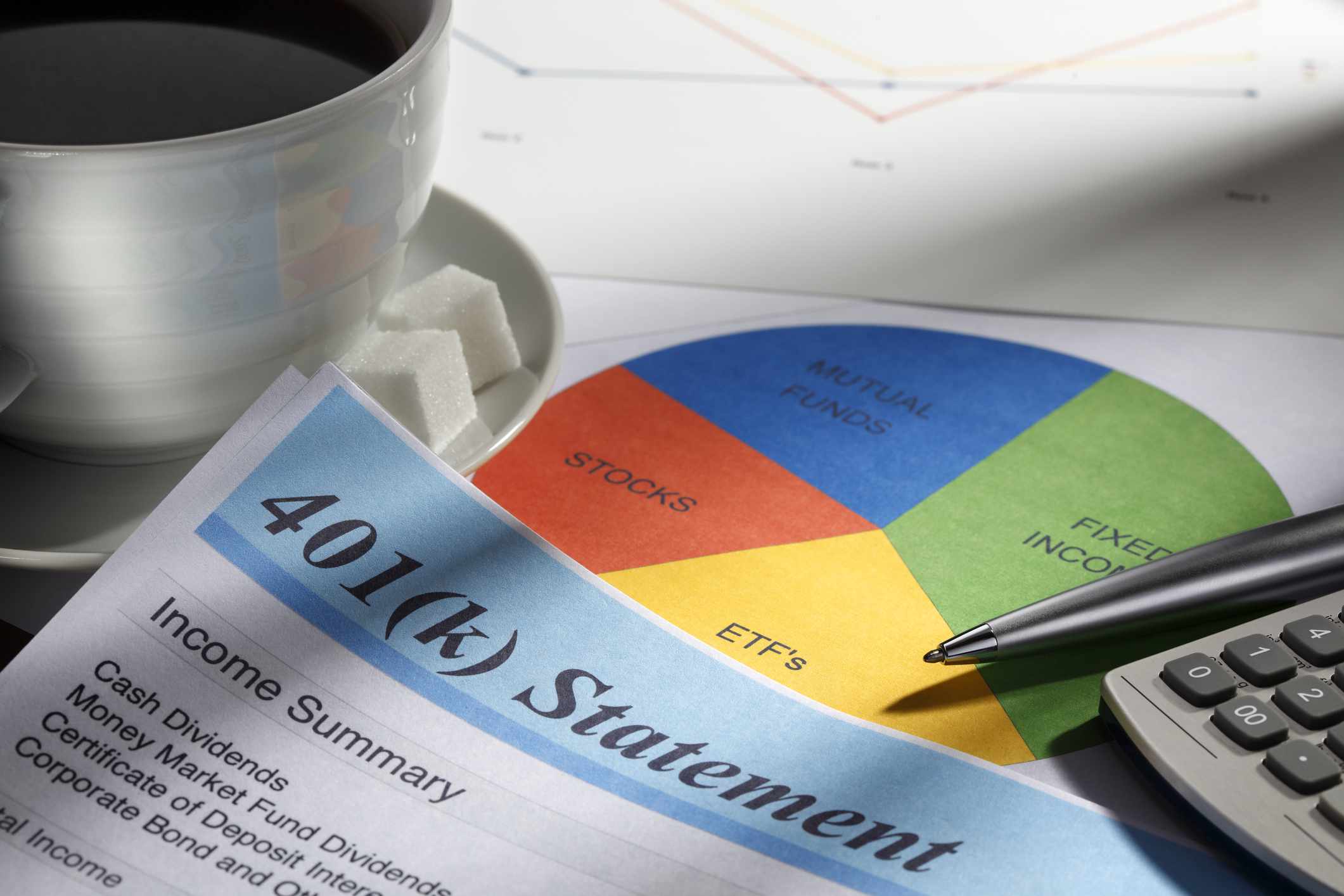

Finance
How Much Is The Average 401K Down This Year
Published: October 17, 2023
Discover the impact of market fluctuations on your 401K this year. Stay updated with the average down statistics and take control of your finances.
(Many of the links in this article redirect to a specific reviewed product. Your purchase of these products through affiliate links helps to generate commission for LiveWell, at no extra cost. Learn more)
Table of Contents
Introduction
2020 was a year of financial turmoil and uncertainty, with the global pandemic affecting economies worldwide. One area that has been significantly impacted by these events is retirement savings, particularly 401K accounts. As the stock market experienced unpredictable swings and volatility, many individuals saw their 401K balances decline considerably.
In this article, we will delve into the average decline in 401K accounts this year and explore the factors that influenced these losses. We will also provide insights into how individuals can mitigate their losses and discuss the long-term outlook for 401Ks in light of the current market situation.
It is important to note that while we will be discussing the average decline in 401K accounts, individual experiences may vary. 401K balances are influenced by several factors, including the investment choices made by each individual and the performance of the underlying assets within their plan. Therefore, the average decline serves as a general representation of the trend but may not reflect the exact circumstances of every 401K holder.
Understanding the impact of this year’s events on the average 401K decline can provide individuals with valuable insights into the current state of their retirement savings and help them make informed decisions about their financial future. Let’s dive into the details and uncover the factors influencing the average 401K decline.
Understanding 401Ks
Before we delve into the average decline in 401K accounts, let’s take a moment to understand what a 401K is and how it functions. A 401K is a retirement savings plan offered by employers to their employees. It allows individuals to contribute a portion of their pre-tax income into a retirement account, which can then be invested in a variety of assets such as stocks, bonds, and mutual funds.
One key advantage of a 401K is that contributions are made on a pre-tax basis, meaning that the amount invested is deducted from an individual’s taxable income. This provides immediate tax savings, as the contributions are not subject to income tax until they are withdrawn during retirement.
Additionally, many employers offer a matching contribution to encourage employee participation in the 401K plan. This means that for every dollar an employee contributes, the employer may match a certain percentage of that contribution, up to a specified limit. This employer match effectively boosts the individual’s retirement savings and can significantly impact the overall growth of their 401K account.
401K accounts are typically managed by financial institutions selected by the employer, and individuals have the option to choose from a variety of investment options based on their risk tolerance and retirement goals. Over time, the contributions and investment returns accumulate, growing the overall value of the 401K account.
It is important to note that 401K accounts are long-term investments designed to provide income during retirement. Therefore, the value of the account can fluctuate based on the performance of the investments and the broader market conditions.
Now that we have a better understanding of what a 401K is and how it functions, let’s delve into the current market situation and how it has affected the average decline in these retirement accounts.
Overview of the Current Market Situation
In order to comprehend the average decline in 401K accounts, it is crucial to have an understanding of the current market situation. The year 2020 has been one of unprecedented volatility and economic challenges due to the global pandemic.
As the COVID-19 pandemic spread across the globe, numerous countries implemented lockdown measures to curb the virus’s transmission. These measures had a profound impact on businesses, supply chains, and consumer spending, leading to a significant economic downturn.
One of the key indicators of market performance, the stock market, experienced a sharp decline in the early months of 2020. Major indices like the S&P 500 and Dow Jones Industrial Average saw significant drops as fears regarding the pandemic’s implications on the economy grew.
The stock market serves as a significant influence on 401K accounts, as these retirement plans are often invested in a range of assets, including stocks. A decline in stock prices can directly impact the value of 401K accounts.
Add to this the uncertainty surrounding the pandemic’s duration and the potential long-term economic effects, and it becomes evident that 401K accounts faced a challenging situation in 2020.
However, it is important to note that the market situation has gradually stabilized, and there have been periods of recovery and growth. Government stimulus measures, central bank interventions, and increased consumer confidence have contributed to market rebounds during certain periods throughout the year.
Despite these positive signs, it is essential to remain cautious and keep a close eye on the evolving market conditions. The financial landscape is dynamic, and investors should closely monitor their 401K accounts and make informed decisions based on their long-term goals and risk tolerance.
In the next section, we will explore the factors that have influenced the average decline in 401K accounts, shed light on the possible reasons behind these losses, and examine the extent of the decline.
Factors Influencing the Average 401K Decline
Several factors have influenced the average decline in 401K accounts this year. Understanding these factors is crucial to gaining insight into the reasons behind the losses and assessing their impact on individual retirement savings.
1. Stock Market Volatility: As mentioned earlier, the stock market experienced significant volatility in 2020 due to the COVID-19 pandemic. Market downturns, driven by investor fears and uncertainties, directly affected the value of 401K accounts, especially those heavily invested in stocks.
2. Economic Slowdown: The economic slowdown caused by the pandemic had a broad impact on businesses and industries. Layoffs, furloughs, and reduced consumer spending resulted in reduced revenue for companies and affected their stock prices. This, in turn, impacted the value of 401K accounts that held investments in these affected companies.
3. Interest Rates: In response to the economic challenges, central banks around the world implemented measures to stimulate the economy, which included lowering interest rates. While this was done to encourage borrowing and investment, it also affected the returns on fixed-income investments, such as bonds, which are often included in 401K portfolios. Lower returns on these investments contributed to the decline in 401K balances.
4. Asset Allocation: The asset allocation within individual 401K accounts can also play a role in the decline. If an individual’s portfolio was heavily weighted towards stocks or riskier assets, the decline in the stock market would have had a more significant impact on their 401K balance. On the other hand, a more conservative asset allocation with a higher allocation to bonds may have provided some level of protection against the decline.
5. Timing of Contributions and Withdrawals: The timing of contributions and withdrawals can also impact the average decline in 401K accounts. Individuals who made contributions during market downturns may have experienced a decline in the initial value of their contributions. Additionally, individuals who needed to make withdrawals from their 401K accounts during this period may have experienced selling assets at a lower value, further contributing to the decline.
It is important to note that these factors are general influences, and the extent of their impact on individual 401K balances will vary. Factors such as an individual’s investment choices, age, retirement timeline, and risk tolerance will also play a significant role in determining the specific impact on their accounts.
In the next section, we will analyze the average 401K losses and provide insights into the extent of the decline.
Analyzing the Average 401K Losses
Now that we understand the factors that have influenced the average decline in 401K accounts, let’s analyze the extent of these losses and their impact on individuals’ retirement savings.
It is important to note that the average decline in 401K accounts this year can vary based on several factors, such as the investment choices made by individuals and the performance of their specific plans. However, studies and reports have provided some insights into the general trend.
According to data from leading retirement plan providers and financial institutions, the average decline in 401K accounts in 2020 ranged from around 10% to 20%. This decline is attributed primarily to the significant drops in the stock market during the early months of the COVID-19 pandemic.
However, it is essential to remember that these figures reflect the average decline and may not accurately represent the exact situation of every 401K holder. Individual experiences can vary widely depending on factors such as their asset allocation, contribution timing, and risk tolerance. Some individuals may have experienced larger declines, while others may have seen smaller or even positive growth in their 401K balances.
Regardless of the extent of the average decline, it is crucial to maintain a long-term perspective when analyzing the losses. Market downturns and temporary declines are a normal part of investing, and it’s important to remember that 401K accounts are designed for long-term growth and stability.
Individuals with 401K accounts should review their investment strategy and reassess their risk tolerance in light of the market conditions. A well-diversified portfolio, regularly rebalanced based on changing market conditions, can help mitigate the impact of future market fluctuations and improve the long-term performance of the account.
Another critical aspect to consider is the potential for market recovery. Historically, after significant market downturns, there has often been a period of recovery and growth. While past performance does not guarantee future results, this historical pattern can provide some level of reassurance that 401K accounts have the potential to recover from downturns over time.
In the next section, we will explore strategies for mitigating 401K losses and protecting retirement savings in the face of future market uncertainties.
Strategies for Mitigating 401K Losses
While the average decline in 401K accounts this year has been a cause for concern, there are several strategies individuals can employ to mitigate their losses and protect their retirement savings.
1. Review and Rebalance: Regularly review your 401K portfolio and rebalance it if necessary. Rebalancing involves adjusting the allocation of your investments to maintain your desired risk level. This ensures that your portfolio does not become too heavily skewed toward any one asset class that may be experiencing downturns.
2. Diversify Your Investments: Diversification is key to mitigating risk in your 401K account. Spread your investments across different asset classes, such as stocks, bonds, and international funds. This helps to reduce the impact of market volatility on your overall portfolio.
3. Consider Dollar-Cost Averaging: Dollar-cost averaging involves investing the same amount of money into your 401K at regular intervals, regardless of market conditions. This strategy helps to mitigate the impact of market fluctuations by automatically buying more shares when prices are low and fewer shares when prices are high.
4. Stay the Course: It is important to remain focused on your long-term goals and resist the urge to make knee-jerk reactions to market downturns. Trying to time the market by selling in a downturn and buying back in when the market recovers can be a risky strategy. Instead, stay invested and trust in the long-term growth potential of your 401K account.
5. Seek Professional Advice: If you are unsure about how to navigate the current market situation and protect your 401K savings, consider seeking guidance from a financial advisor. They can provide personalized advice based on your individual circumstances and help you make informed decisions.
Remember, while it is disheartening to see declines in your 401K account, it is essential to maintain a long-term perspective. The value of your account will fluctuate over time, but with sound investment strategies and a disciplined approach, you can mitigate losses and position yourself for long-term growth and financial security.
In the final section, we will discuss the long-term outlook for 401Ks and what individuals can expect moving forward.
Long-Term Outlook for 401Ks
Despite the temporary declines and challenges faced by 401K accounts in 2020, the long-term outlook for these retirement savings plans remains positive. It is important to remember that 401K accounts are designed for long-term growth and provide individuals with the opportunity to accumulate wealth for their retirement years.
Historically, the stock market has shown resilience and has experienced periods of recovery and growth after downturns. While it is impossible to predict the exact trajectory of the market, it is reasonable to expect that over the long term, the market has the potential to rebound and provide positive returns.
Furthermore, contributions made to 401K accounts benefit from the power of compounding. Over time, the compounding effect allows investments to grow exponentially, meaning that even small contributions can have a significant impact on the overall value of the account.
It is also worth noting that the global economy is constantly evolving, and new innovations, technologies, and industries emerge over time. As these changes occur, there are opportunities for growth and investment that can positively impact the performance of 401K accounts.
However, it is crucial to approach the future with a level of caution and realistic expectations. Market volatility is a normal part of investing, and individuals should be prepared for fluctuations in their 401K balances. Regular monitoring and periodic adjustments to investment strategies may be necessary to adapt to changing market conditions and ensure the preservation and growth of retirement savings.
Additionally, individuals should stay informed about changes in retirement policies, contribution limits, and tax regulations that may impact their 401K plans. This will help them make informed decisions and take advantage of any opportunities to optimize their retirement savings.
In summary, while short-term declines in 401K accounts can be discouraging, individuals should focus on the long-term potential of these retirement savings plans. By employing sound investment strategies, regularly reviewing and adjusting their portfolios, and maintaining a disciplined approach, individuals can position themselves for the growth and financial security they desire in their retirement years.
By staying proactive, educated, and committed to their long-term goals, individuals can navigate the challenges of the present and achieve a bright and stable retirement future.
Conclusion
2020 has been a year of unprecedented challenges and uncertainty, and the average decline in 401K accounts serves as a reminder of the impact of global events on retirement savings. However, it is important to approach this decline with a long-term perspective and the understanding that market volatility is a normal part of investing.
While the average decline in 401K accounts this year can vary based on individual circumstances, it is crucial to remember that 401K plans are designed for long-term growth. By employing strategies such as diversification, regular portfolio review, and staying committed to long-term goals, individuals can mitigate their losses and position themselves for future growth.
It is also important to consider seeking professional advice from financial advisors to make informed decisions about portfolio management and risk tolerance. These experts can provide personalized guidance and help individuals navigate the complexities of the current market situation.
Moving forward, it is essential to stay informed about changes in retirement policies, tax regulations, and market conditions that may impact 401K accounts. By staying proactive and adjusting investment strategies when necessary, individuals can maximize the potential of their retirement savings.
While the journey may have its ups and downs, the long-term outlook for 401Ks remains positive. Historical patterns of market recovery and the power of compounding provide hope and reassurance that individuals can build a secure and prosperous retirement future.
By staying focused on long-term goals, maintaining discipline, and making informed decisions, individuals can navigate through market uncertainties and position themselves for a financially secure and satisfying retirement.
Remember, your financial future is in your hands, and with careful planning and a resilient mindset, you can overcome the challenges of today and build a prosperous tomorrow with your 401K.














